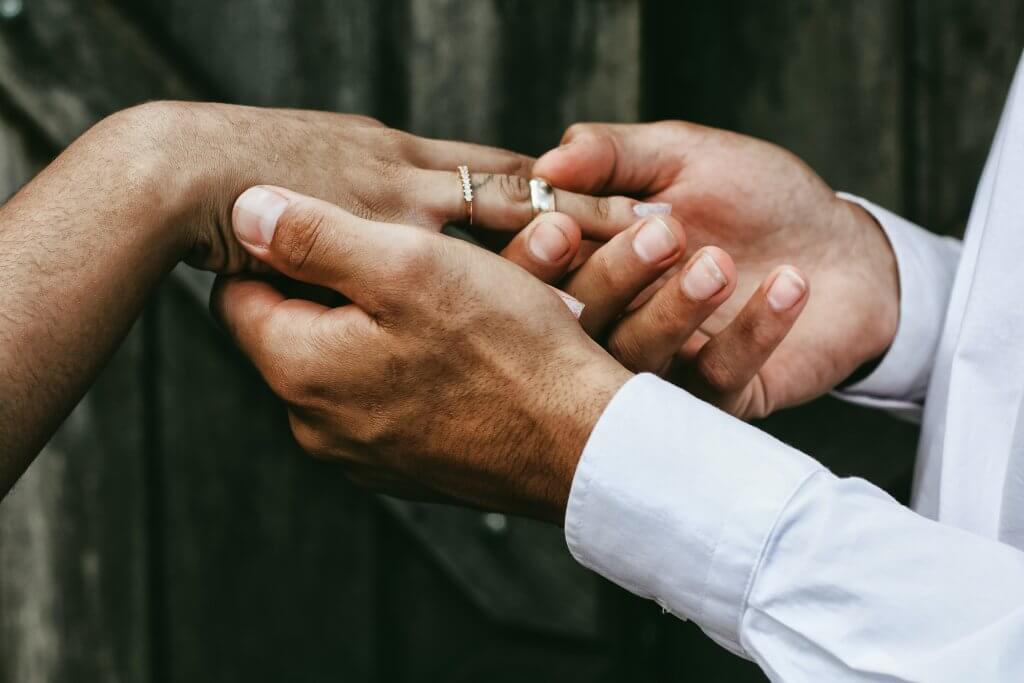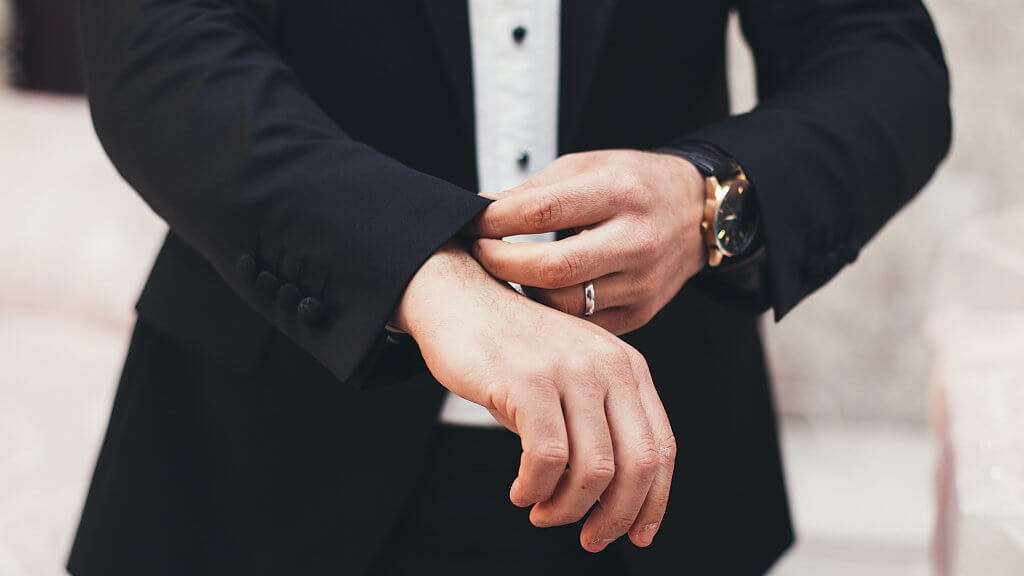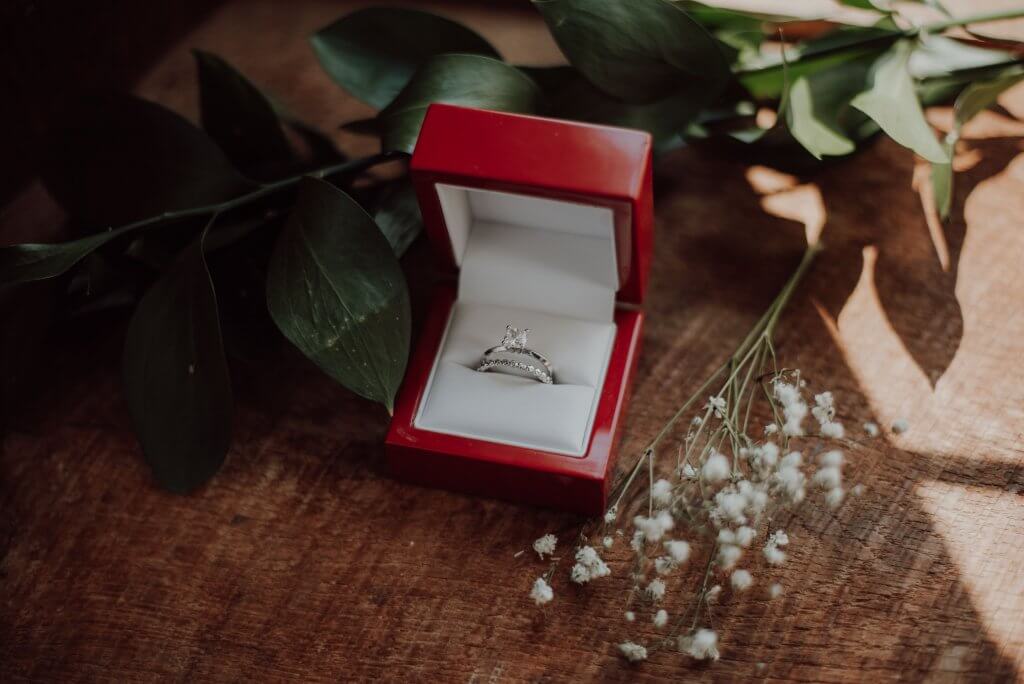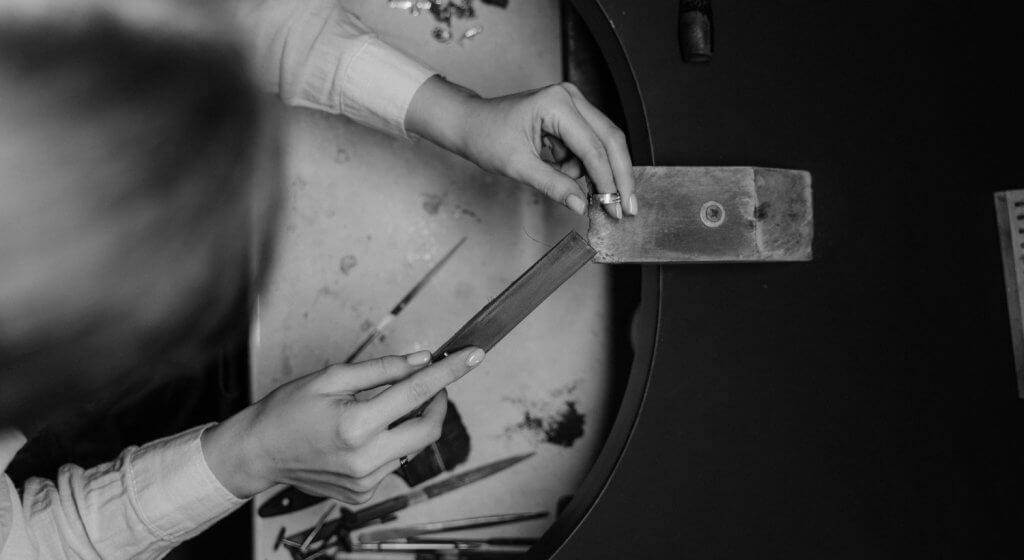Discover The Best Metal For Your Wedding Ring
Key Takeaways
- Gold is widely regarded as the most traditional (and for that reason romantic) choice for brides and grooms, thanks to its long history as a symbol of commitment. Even so, that’s no reason not to go for another metal, like platinum.
- Most people prefer not to mix metals but, if you know your partner likes the effect, then there are plenty of beautiful designs that feature more than one type or color of metal.
- Platinum is a better choice for anyone with skin sensitivities, since it’s far purer than the gold used in jewelry.
- Don’t just go for the highest karat gold you can find. It’s about strength, cost, and beauty – not so called ‘purity’.

Choosing a wedding ring is pretty much the polar opposite of choosing an engagement ring.
For starters, you’re probably approaching this next step as a team, and away from the pressures of choosing that perfect diamond – not to mention planning a winning proposal behind her back.
What’s more, wedding rings are almost always the simpler of the two pieces. Whether you opt for a plain band of gold, or a simple channel setting of coordinating diamonds – or something entirely different – there are likely to be fewer factors to consider.
What does this mean for you? Other than a simpler time choosing, it means that your choice of metal will probably sit front and center in your mind. From durability to color, shine, and cost, picking the right metal (or metals) for your wedding rings is a whole different can of worms.
What is the Most Traditional Wedding Ring?
Gold, although there is no single reason why. The unrivalled warm shine of yellow gold has meant that it has been coveted throughout history, and worn on the ring fingers of endless couples over hundreds of years.
Whether you consider yourself a romantic at heart and enjoy the timeless strength and beauty of gold, or simply like the lustrous warm hue and prestige of a high karat gold ring, choosing to follow tradition and embrace this precious metal will never go out of style.
Still, the years see us breaking from more and more traditions and creating our own ways of doing things, gold has become one choice among many.
For any bride or groom, the choice comes down to personal preference – and, of course, the relatively new idea that, really, there are no real rules to follow.
What is the Most Expensive Type of Wedding Ring?
A platinum ring will cost more than an equivalent ring made of gold, although this can be confusing to some shoppers, as gold is the expensive metal, costing approximately $1,300 per ounce vs $1,055 per ounce.
Why? Because pure gold can’t be used in jewelry – it’s too soft and, even in the most expensive rings, needs to be combined with other strengthening metals to prevent it warping, denting, or scratching as soon as it is placed on the finger. In other words, gold jewelry is an alloy, because it isn’t pure.
Platinum is naturally strong enough as a pure metal, rather than an alloy, so a wedding band can easily be cast from 95%+ platinum. So, even though gold is more expensive, less gold is used to cast a wedding band, which means that platinum rings are the pricier choice.
Palladium, a rare metal with a slightly darker hue than platinum, is also an expensive choice, although we wouldn’t recommend it over platinum. Not only is it much rarer, but it’s harder to work with – meaning many jewelers try to avoid these rings – so the extra cost for this pretty unique metal doesn’t seem worthwhile.
What is the Most Durable Metal for Wedding Rings?
Platinum is incredibly strong, and more than capable of withstanding many decades on your finger. Still, gold – and particularly white or rose gold – remains a solid choice (literally) for anyone looking to wear those warmer hues without taking on countless knocks and scrapes over the years.
One of the reasons platinum has grown so popular recently is down to its durability – a quality that extends to its incredibly bright white sheen, which can be easily restored by a jeweler if the years begin to dull its luster.
But, as we mentioned above, gold is alloyed with stronger metals. This is what determines its karat, with one karat equaling 1/24th of the ring. So, 24 karats is another way of saying ‘pure gold’, while 18 karats simply means that the ring is 18 parts gold to 6 parts nickel, copper, silver or any other allow used.
Why does this matter? Because, to a certain extent, a gold’s karat determines its strength. A 14 karat gold will generally be stronger than an 18 karat gold.
This is why rose gold, an allow of gold, copper, and silver, is naturally stronger than yellow gold. Copper is a hard, durable metal, and lends those qualities – alone with a pink hue – to the gold it is alloyed with.
In other words, on strength alone, platinum wins out – but don’t rule out gold just yet.
In recent years, tungsten has also become a popular choice for wedding rings – particularly among grooms, who prefer the more understated greys and blacks this metal can provide. This metal is incredibly tough, too, so great if you work with your hands, but that does mean resizing is impossible, so think carefully before committing to this metal – and, obviously, get your finger measured by your jeweler.

Is it Bad to Mix Jewelry Metals?
No, and it’s time to put that supposed ‘rule of fashion’ to bed. Different metals, or a combination of white and rose gold or yellow gold and platinum, creates a bold and luxurious statement that many modern brides and grooms are choosing to make.
Take, for instance, the mixed metal engagement rings taking the jewelry world by storm. Jewelers are now intentionally combining two or more contrasting metals, rather than restricting themselves to white or gold, warm or cool, pink, or yellow – and the results are seriously impactful.
If you’ve already embraced this new style in your engagement ring, then you’ve likely already realised that the world (or, in this case, the jewelry store) is your oyster when it comes to picking a metal for your wedding band.
If your engagement ring is more traditional, however, it’s worth remembering that there’s no obligation to follow the same theme for your wedding band. That old ‘gold or silver’ rule is fading into the distance – now, it’s all about what you want to see on your finger every morning when you wake up.
What Metal Jewelry is Hypoallergenic?
Platinum. The purer the metal, the better it is for those who have sensitive skin or allergies to certain metals, and platinum jewelry features 95% pure platinum.
Unfortunately, a lower karat gold means a greater likelihood of irritation or allergic reaction, since it will have been combined with metals like nickel, copper, and zinc. Avoid both rose and white gold for this reason.
18 karat gold is your best bet if you really can’t pass up this precious metal, or you might choose to accent a platinum band with a gold accent, to incorporate that distinctive yellow color without risking your skin.
On the other hand, the tough and masculine tungsten is also hypoallergenic, even if it has been alloyed with nickel!
Can You Use Sterling Silver for a Wedding Ring?
Yes, but we wouldn’t recommend it unless your budget has you on a tight leash.
Sterling silver is a beautiful alloy of silver and copper, but it’s nowhere near as strong or as durable as gold or platinum.
If you’re all about the bright, white shine of silver but can’t stretch to platinum, then we’d always recommend a white gold wedding band as a good compromise.
Since it’s an alloy, sterling silver is not hypoallergenic, and its vulnerability to tarnishing means that it’ll need cleaning more often. What’s more, its softness mean that scratches and dents could force you to spend extra on replacing it after just a few years’ of wear.
A lower karat white gold is both relatively affordable, and considerably more durable.
Does Rose Gold Fade Over Time?
No, but the color can deepen over many years’ wear as the copper alloy within the gold gradually forms a patina (in other words, a dark film on the surface).
Believe it or not, rose gold rose was first featured in a Fabergé Egg in the 1800s but, much more recently, it has become a wildly popular choice in fine jewelry.
The exact color of rose gold can range from a subtle blush to a deep and rosy pink, depending on the quantities of copper and other alloys used within it. Since the copper will never be lost from the ring, it will never return to yellow gold, but the copper will react with oxygen and deepen the red color of the ring.
This will take many, many years – and many wearers take pride in that deep color, which cannot be imitated in new rings and, as a result, comes to represent many years of marriage.
So, Which is the Best Metal for Wedding Rings?
In our opinion, either gold or platinum is the best choice for most brides and grooms.
These two precious metals are highly versatile, and offer a shine and color none of the other options can replicate exactly.
Our number one recommendation? Seeing these rings in person. Use our jewelry store locator to find a reputable establishment in your area, book a consultation, and experience these metals – their shine, weight, and how they feel on your finger – in order to make a person choice that will stay with you for the rest of your life.

Aug 17, 2021 By Willyou.net
Bling Up Your Look: Bridal Ring Sets

Mar 17, 2022 By Willyou.net
The Art Of Ring Making: A Behind-The-Scenes Look








